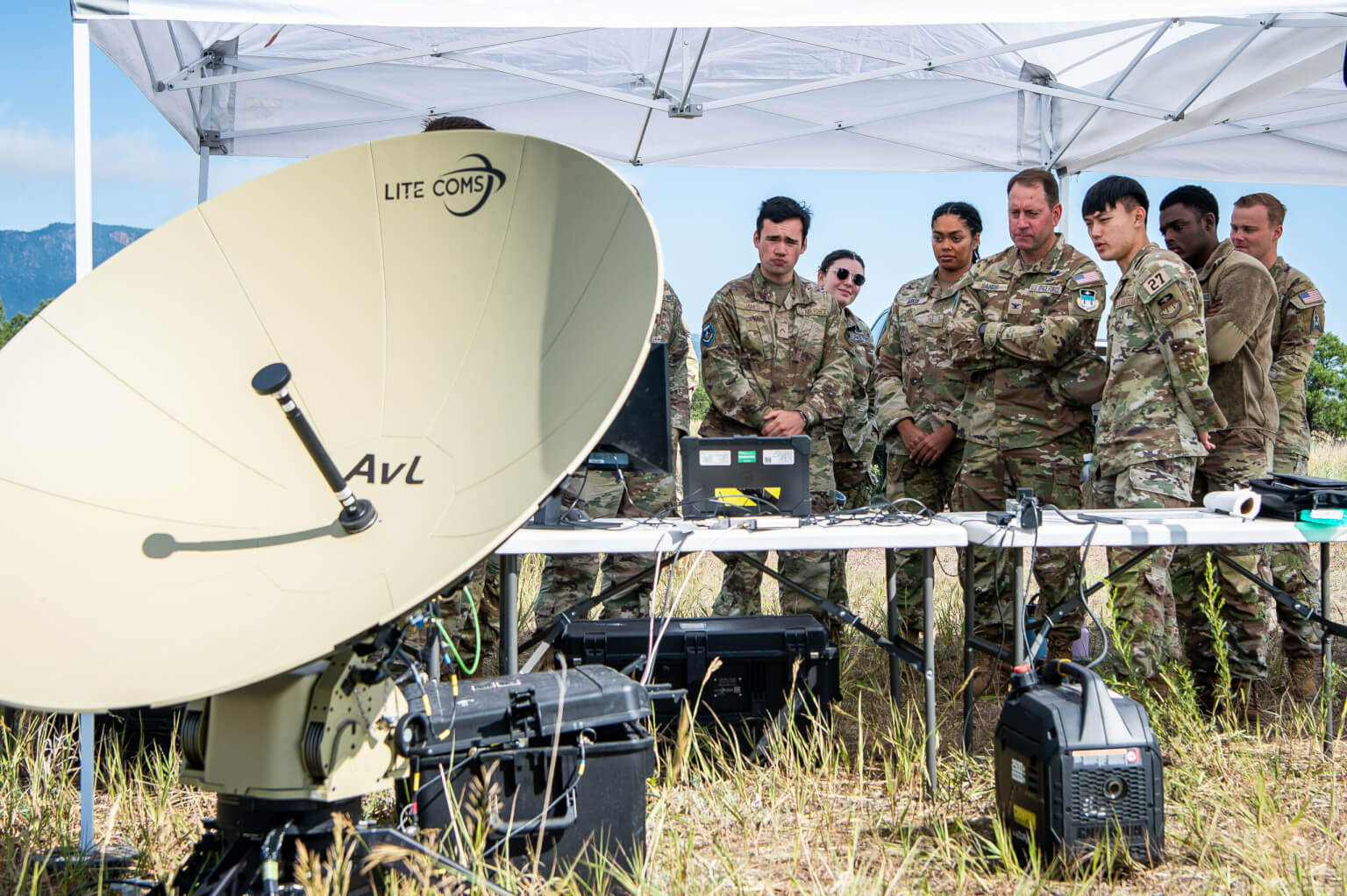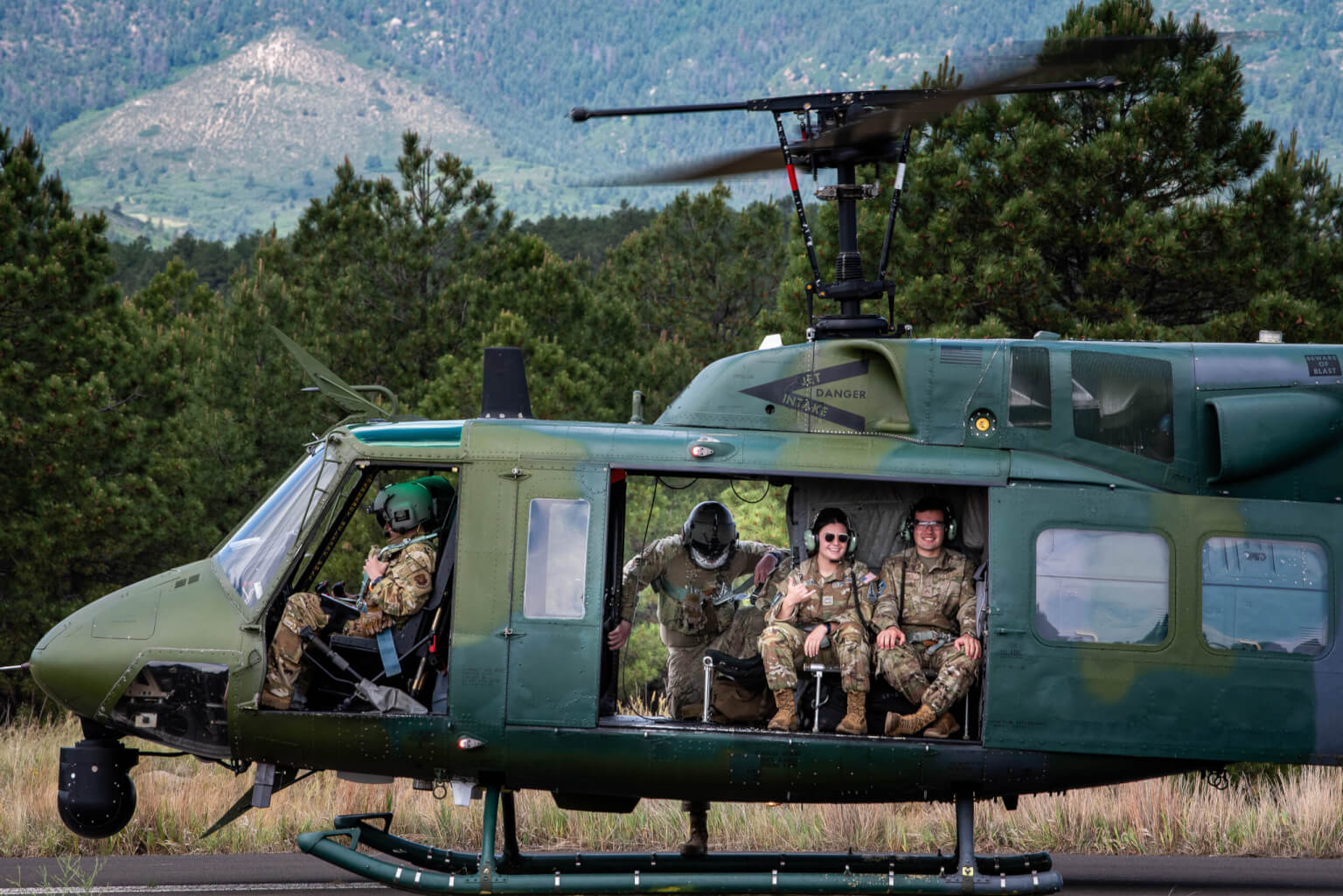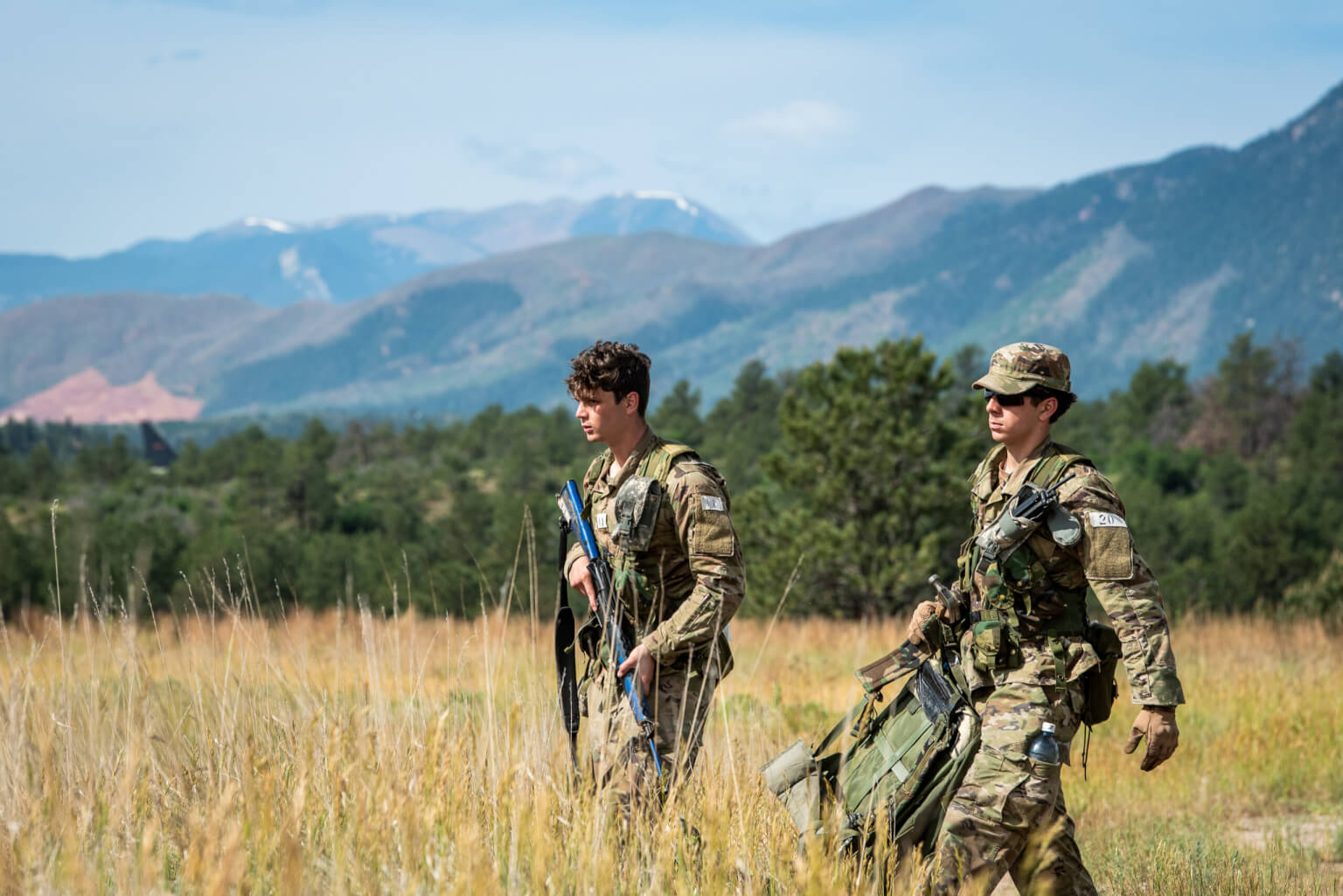Azimuth space program integrated into Special Warfare Orientation

U.S. Air Force Academy Cadet 3rd Class Dexter James, left, ROTC Cadets Margaret Rongaus and Elijah Barker, Delta 13, Detachment 1 Commander Col. Marc Sands, Cadet 3rd Class Kento Yamamoto, and ROTC Cadet Dudley Mayard listen to a U.S. Space Force Guardian briefing on TUSK Satellite capabilities during the Azimuth and Special Warfare Orientation Course joint exercise June 21, 2024. For the first time in its three-year history at the U.S. Air Force Academy, participants integrated with their peers in the Special Warfare Orientation Course in a simulated joint operation exercise. (U.S. Air Force photo by Justin Pacheco)
By Randy Roughton
U.S. Air Force Academy Strategic Communications
U.S. AIR FORCE ACADEMY, Colo. – As the academy for the U.S. Space Force, the U.S. Air Force Academy offers an array of space-related programs. This summer, cadets joined their ROTC peers for the third consecutive year for the Azimuth space education and training program. During the three-week sessions, participants met with strategic leaders, commercial industry partners, built rockets, operated satellites, and participated in a joint operations exercise with the Special Wafare Orientation Course.
The Delta 13 Space Detachment program inspires cadets to become officers of character to lead the Space Force. It helps prepare future Guardians to prevail in competition and conflict through innovative education, training, doctrine and testing. Azimuth also fosters connections and joint capabilities to guide a greater understanding of space, said Cadet 2nd Class John Stevenson, the Azimuth i5 space director of staff.

ROTC Cadet Margaret Rongaus, left, and U.S. Air Force Academy Cadet 3rd Class Dexter James exfil from an established airstrip in Jacks Valley after installing satellite communications for the Special Warfare Orientation Course’s global access team June 21, 2024. For the first time in its three-year history at the U.S. Air Force Academy, Azimuth participants integrated with their SWOC peers in a simulated joint operation exercise. (U.S. Air Force photo by Justin Pacheco)
Hands-on joint operations training
This year, Azimuth was integrated into the Special Warfare Orientation Course in a joint operation exercise for the first time, said U.S. Space Force 2nd Lt. Zachary Szvetecz, Class of 2023. In 2022, he was Azimuth’s cadet squadron commander; this summer, he is the program’s officer in charge of SWOC integration.
During the exercise, Azimuth cadets provided space capabilities such as satellite communications, electronic attack and support and space command and control. SWOC cadets supported the exercise with personnel recovery, global access and precision strikes. Additionally, a team of Azimuth cadets was attached to SWOC’s global access team to set up satellite communication capabilities and conduct anomaly resolution. Three other teams operated an electronic warfare simulator at an alternate location to support ground forces in Jacks Valley.
The exercise demonstrated joint operations as the utilization and combination of different layers of capabilities, Szvetecz said. In this way, participants gained valuable experience.

Cadets patrol Jacks Valley during one of three Azimuth summer sessions June 21, 2024. For the first time in its three-year history at the U.S. Air Force Academy, half of the program’s attendees are cadets from other service academies and ROTC detachments. (U.S. Air Force photo by Justin Pacheco)
Azimuth’s growth over the past three years
This summer, almost 300 cadets and students attended one of the three sessions, an increase from 60 during Azimuth’s debut in 2022. That year, five of the inaugural Azimuth class came from ROTC detachments. In 2024, half of the attendees were Academy cadets. The other half was a combination of cadets from other service academies and ROTC detachments and DoD civilians, Stevenson said.
“We have tried to foster more connections between our commercial partners, ROTC and the Academy,” Stevenson, a Systems Engineering major, said. “The goal is for our attendees to take their experiences back to their respective detachments to incentivize people to come to Azimuth programs and potentially join the Space Force.”
The impact of Azimuth in the joint domain
Azimuth has expanded substantially in its third year. The Azimuth program should continue to grow, along with the service it supports, Szvetecz said.
“As the Space Force continues to develop and evolve, Azimuth will do the same,” he said. “I see Azimuth continuing to grow, specifically when it comes to joint planning and integration. We will help prepare these young Guardians for the challenges and complexities of the space domain and the support of the Joint Force. We will continue to evolve in response to the dynamic role of space operations.”